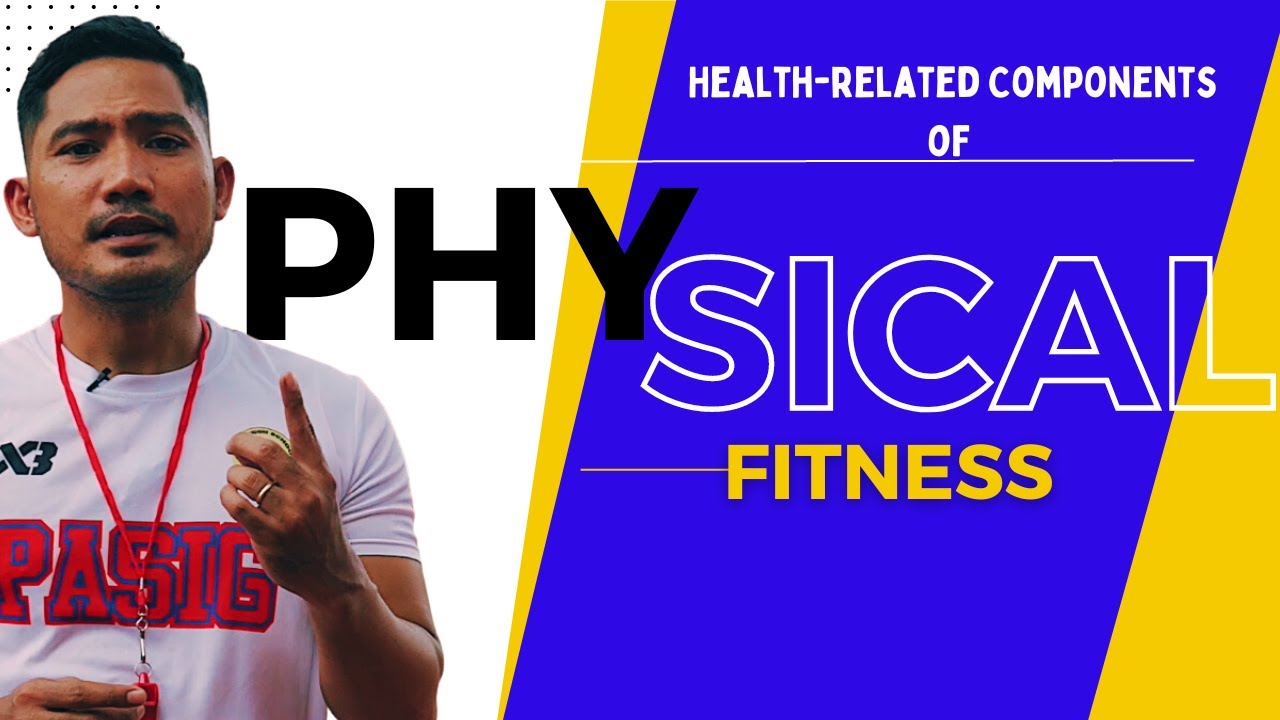Components of physical fitness
Summary
TLDRThis video delves into the five health-related components of physical fitness: cardiovascular endurance, body composition, flexibility, muscular strength, and muscular endurance. It highlights the importance of a well-functioning circulatory system for stamina and efficient oxygen delivery, as well as the role of body fat percentage in overall health. Flexibility is emphasized for injury prevention and improved posture. Muscular strength and endurance are crucial for performing sports movements and avoiding injuries. Additionally, the video touches on six skill-related components: speed, agility, balance, coordination, reaction time, and power, which are essential for athletic performance.
Takeaways
- 💓 Cardiovascular Fitness: The ability of the circulatory system to supply oxygen to muscles during exercise, affecting stamina and efficiency in oxygen delivery and lactic acid clearance.
- 🏋️♀️ Body Composition: The ratio of body fat to lean body mass, which includes muscles, bones, and water, impacting strain on joints and muscles.
- 🧘♀️ Flexibility: The range of movement at joints, which affects movement quality, injury prevention, posture, and lower back pain.
- 🏋️♂️ Muscular Strength: The force produced by a single muscle contraction, important for powering through movements and avoiding injuries.
- 🏃♂️ Muscular Endurance: The ability of muscles to contract repeatedly over time, crucial for sustained physical activities.
- ⚡ Speed: The capacity to move quickly in a straight line, essential for sports requiring rapid body or limb movements.
- 🔄 Agility: The ability to change direction swiftly, useful for evading opponents or reaching a ball faster in sports.
- 🕴️ Balance: The maintenance of an upright posture, static or dynamic, linked to agility and efficient movement.
- 🤹♂️ Coordination: The synchronization of body movements with sensory input, important for complex physical tasks.
- ⏱️ Reaction Time: The speed at which the brain responds to stimuli, a key factor in sports and quick movements.
- 💥 Power: The combination of strength and speed, allowing for explosive physical exertion.
Q & A
What is the first component of physical fitness discussed in the video?
-The first component of physical fitness discussed is cardiovascular fitness, which is the ability of the circulatory system to supply oxygen to working muscles during exercise.
How does cardiovascular fitness relate to stamina and lactic acid?
-Cardiovascular fitness is related to stamina as it determines how long one can exercise without collapsing. It also helps in efficiently delivering oxygen and clearing out lactic acid, which is a byproduct of oxygen consumption that can cause muscles to seize if it builds up.
What is the role of body composition in physical fitness?
-Body composition refers to the relative percentage of body fat compared to lean body mass. Maintaining a healthy weight through body composition helps decrease the strain on joints and muscles.
Why is flexibility important in physical fitness?
-Flexibility is important as it allows for a greater range of movement at various joints, preventing stiffness and reducing the risk of injuries. It also improves posture and can help reduce lower back pain.
Define muscular strength and muscular endurance as mentioned in the video.
-Muscular strength is the amount of force that can be produced by a single contraction of a muscle, which is crucial for powering through sports movements, sustaining physical hits, and avoiding injuries. Muscular endurance is the ability of a muscle group to continually contract over an extended period.
What are the six skill-related components of physical fitness mentioned in the script?
-The six skill-related components of physical fitness are speed, agility, balance, coordination, reaction time, and power.
How does speed differ from agility in the context of physical fitness?
-Speed is the ability to move quickly in a straight line, while agility involves the ability to change direction quickly, which is useful in sports for dodging defenders or reaching a ball faster.
What is the significance of balance in physical fitness?
-Balance is the ability to maintain an upright posture, either while still or moving. It is linked to agility and is essential for moving quickly and efficiently in various postures.
How is coordination related to physical fitness?
-Coordination in physical fitness refers to the integration of hand or foot movements with the input of the senses, which is crucial for performing complex movements and sports activities effectively.
What is the role of reaction time in physical fitness?
-Reaction time in physical fitness is the amount of time it takes for the brain to respond to a stimulus and initiate a response. It is an important aspect, especially in sports where quick reactions can be the difference between success and failure.
How is power defined in the context of physical fitness?
-Power in physical fitness is the ability to perform strength work at an explosive pace. It is the combination of both strength and speed, which is essential for high-intensity activities and sports.
Outlines

This section is available to paid users only. Please upgrade to access this part.
Upgrade NowMindmap

This section is available to paid users only. Please upgrade to access this part.
Upgrade NowKeywords

This section is available to paid users only. Please upgrade to access this part.
Upgrade NowHighlights

This section is available to paid users only. Please upgrade to access this part.
Upgrade NowTranscripts

This section is available to paid users only. Please upgrade to access this part.
Upgrade NowBrowse More Related Video
5.0 / 5 (0 votes)





